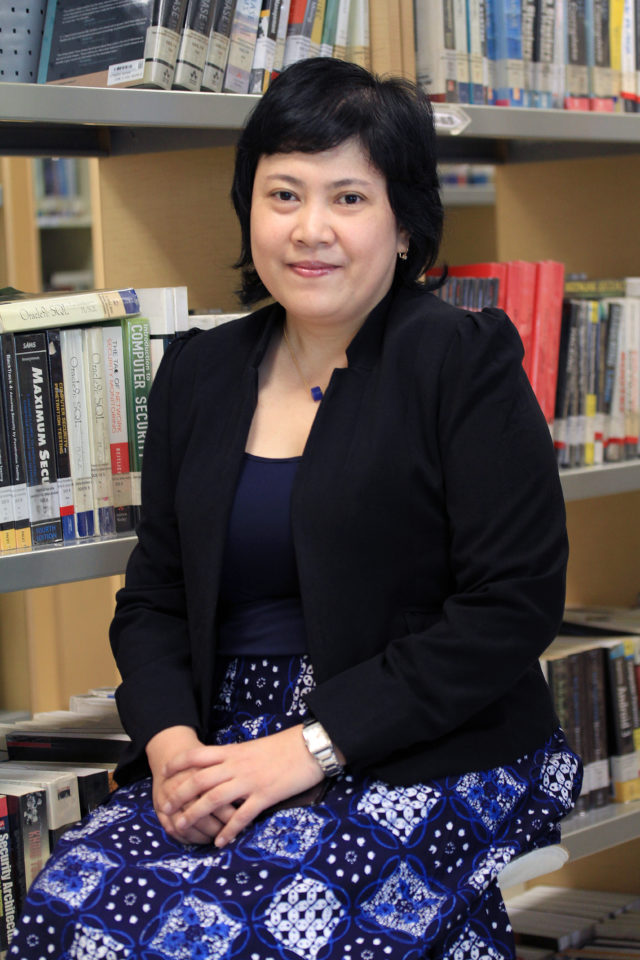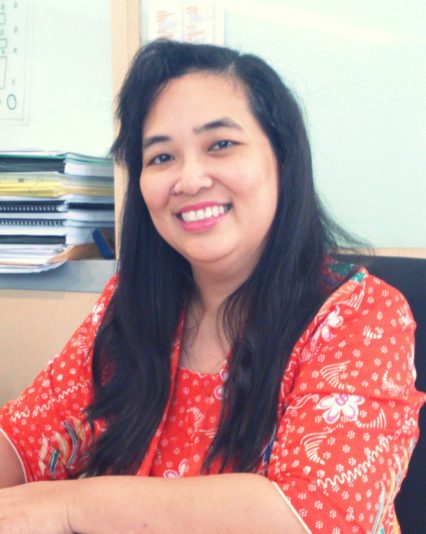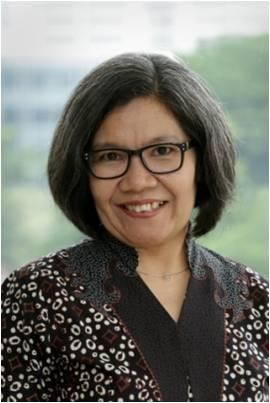Case Document
PT NESTLÉ INDONESIA: CREATING SHARED VALUE FOR INDONESIAN COFFEE FARMERS
The case is about how Nestle Indonesia implemented itsCSV initiatives to the rural areas where its factories located. The case uses Nestle coffee factory in Panjang, Lampung as the background setting, and how Nestle helps the coffee farmers in Lampung to support its raw material needs (domestic and export) while guiding the farmers in making a profitable farming.
Coffee is also the 2nd important commodity in the world, with Indonesia coming 4th as coffee exporters. The supply of coffee comes from small scale farmers with limited resources while demand opportunity is attractive with possibility for different market segments. Indonesia’s coffee industryhas its own drawback with limited resources in term of farmers’ knowledge on good agricultural practice, farmers’ financial strength, and inherited old trees.
PT. KAI: BUSINESS & PEOPLE TRANSFORMATION - THE LEADERSHIP ROLE OF IGNASIUS JONAN
The key operation of PT. Kereta Api Indonesia is now more on the customer perspective such as better customer service, competitive price, on time schedule and safety. One of PT. Kereta Api Indonesia’s services is on how customer can buy their ticket faster and convenience. Currently, customer can buy their ticket through many channels of ticket distribution in mini markets, even 90 days before the D-day. People can now buy their ticket through a franchise store and also through online payment that allows customer to pay directly through the ATM. This services has resulted many achievements and awards in 2013 on various area, from marketing, GCG, IT and Jonan appointed as The Best CEO of State-Owned Enterprises. PT. KAI has change from an old perception into a brand new experience of a real customer oriented services. The main transformation element was the leadership role from Jonan during 2009-2014. He mostly touched the operational aspects which focus more on the customer satisfaction. The transformation of PT. Kereta Api Indonesia would be a very good example on how a company can have its own turnaround point and transformed to be a better and performed company with a strong leadership.
CONNECTING ACCOUNTANTS TO SUSTAINABILITY REPORTING
HUTAMA KARYA ASPAL BETON (HK ASTON): ENTREPRENEUR MINDSET
Budi Prasetyo, CEO of HK Aston, is preparing big agenda that afternoon. He is busy coordinating big projects of his new office HK Aston. As a subsidiary company of Hutama Karya a State Own Enterprises in construction business, HK Aston have specific mission to be a focus company in managing Asphalt and Steel business. One of the big projects on the pipeline is Tanjung Benoa Toll Road in Bali.
First of all HK Aston is a newly startup company set up in 2009 with mission to differentiate services and bring more value to the industry towards better services as a group of businesses.
Main purpose setting up subsidiary company with core business of specific services is to gain focus in asphalt services which value added perceive values. HK Aston business operation is still active during the process of spin off from division under Operation Directorate to become full fledge company.
Moreover Tanjung Benoa Toll road is a big case that need collaboration between new company and existing surely they must have a strong entrepreneurial spirits towards vision of the new company.
THE NEW KID IN TOWN: MINI “COUNTRYMAN” LAUNCH
MINI is an easily recognizable name in the car industry, and the company aimed to make that true in Indonesia as well. The financial crisis of 2008 showed the strength of the Indonesian economy, as it maintained a 6-8% growth rate in GDP while developed countries in the West stumbled. Furthermore, Indonesia boasts a huge potential market for MINI with both population growth and median age increasing. The automotive industry saw substantial growth in its market. Within one year, 2010 to 2011, car sales in Indonesia jumped by 17%, or 900,000 new vehicles. In general car sales, MINI and its mother company, BMW, face stiff competition from the likes of Toyota, Nissan, Honda, GM, Suzuki and Daihatsu, all of which are expanding. Japanese producers, in particular, make up 95% of the market.
To start its bid to win over the Indonesian premium car market segment, MINI chose the “Countryman” car model as its main product. The car itself came in two models: the S Countryman and the Countryman. For the MINI Countryman, its competitors in size and function come from BMW mostly, followed behind by Mercedes and Audi. The management team was able to divide its target market segment into two distinct groups, 1) the creative individuals and 2) high-income families. In order for the Countryman to reach to the over 300,000 potential customers, MINI needed to translate its brand values into the Indonesian context successfully. The management team agreed to three main objectives: leveraging the MINI global reputation, promoting the vehicle’s unique aspects, and launching a unique marketing scheme.
GREEN BAY PLUIT: DISCOVER MARKET OPPORTUNITY
The development of the property industry is currently increasing significantly and provide options to the broader community in choosing the products that they want the property in accordance with the needs , ranging from product apartment , condominium , kiosks , and residential homes
PT Agung Podomoro Land Tbk . is a development company that provides hybrid concept of property through their latest product is the Green Bay Pluit which is a combination of residential properties and shopping centers.
Although with a unique concept which is owned by Green Bay Pluit , there is a phenomenon faced by companies that kiosk sales slowed compared to the sale of apartment and condominium. After observation it was found that the problem of kiosk products that have not been focused target market , positioning is not clear and has not been optimally integrated marketing mix for product kiosk. Therefore, this case study to present to invite participants to analyze and develop marketing strategies with the aim of resolving the problem of Green Bay.
PT GARUDAFOOD : NUT TRANSFORMATION
In early 2012 GarudaFood, under PT Tudung Putra Putri Jaya, opened its overseas operation center in India, named Garuda Polyflex Foods. The development of this company which started as a beginning in Pati, Central Java, certainly has involvement from Sudhamek, stepped down as CEO of GarudaFood in August 2012, and now a Commissioner within the company. At 2004, Sudhamek was awarded as Entrepreneur of the Year by Ernst & Young Indonesia Entrepreneur of the Year Award and dubbed as The Most Admired CEO by Warta Ekonomi magazine from 2004 to 2007.
The long journey of Sudhamek’s involvement in Garuda Food started when he sold roasted peanuts while he was still in college. Now GarudaFood oversees 20,000 knowledge workers and with its recent partnership with Suntory Beverage & Food Ltd, Japan, in non alcoholic beverage business, things looked bright for GarudaFood. Yet opportunities still await, and people within the company even asked themselves: Who would be able and how to continue the legacy?
BANK NEGARA INDONESIA SYARIAH: HASANAH CARD
This case study was explore about the concept of Hasanah Credit Card (HC) of BNI Syariah (BNIS HC). As a new product from Sharia Business Unit, BNIS HC should find the way to compete with other syariah product in Indonesian market as well compete with conventional card rivals. Afterwards BNIS HC also have to capture the consumer trend yet fundamental approach towards a complete framework to apply in daily business activity. BNIS HC main task is to understand and win the competition by choosing it’s own segments or comunitty. Yet competition for profits goes beyond established credit card rivals to include four other competitive forces as well: customers, suppliers, potential entrants, and substitute products.
Main goals of this case was to get audience have a view of the main challenges that BNIS was facing improve the credit card market with competitive offering.
PT. MARTINA BERTO : IPO VALUATION
It was September 2010, more than a year since PT Martina Berto’s owners decided to take the company to another level of its life cycle, to be a public company. Almost all necessary requirements for going public had been prepared. PT Martina Berto’s management had worked flat out to prepare all documents and appointed advisors required by Badan Pengawas Pasar Modal dan Lembaga Keuangan (Bapepam LK) to register PT Martina Berto initial public offerings (IPO). It was a massive work for the management. However, Bryan David Emil, the CEO of PT Martina Berto, thought that those hard works were worthy. He believed by taking PT Martina Berto going public was the right way for the company to achieve its vision as a leading company in beauty and spa industry in Indonesia. Getting fresh cash from IPO for funding its long term strategic plan was one thing, but imposing a good corporate governance practice in the company was the main reason for Bryan why going public was chosen. He believed that good corporate governance would ensure the company sustainability.
ENERVON-C: EXTENDING PRODUCT LIFE CYCLE
This case can be used for intermediate and advance marketing class. It would be discussing issues the company needs to solve, specifically multivitamine industry company. Generally, every company would want to develop its product and be extended in multivitamine market, thus the company initiates strategies, which is planned and has concern on the product.
Similar initiation also been conducted by PT.Darya-Varia Laboratoria,Tbk with its main product, Enervon-C. This company face issues or dilemma in preserving the existence of Enervon-C in Indonesia multivitamine market. The strategy that might be initiated is commencing Extending Life Cycle Strategies on Enervon-C.
The big challenge is how to extend Enervon-C in current situation without any negative consequence for the brand, product quality perception, and customer loyalty. Company would not only make something new but, how to make the new fresh thing is suitable and fit with market target condition, and marketing environment. Some initiative had been conducted such as new packaging, new product variant, new brand ambasador, and new advertising concept. The interesting point in this case is participant would be invited to evaluate those activities and develop strategic recommendation.








